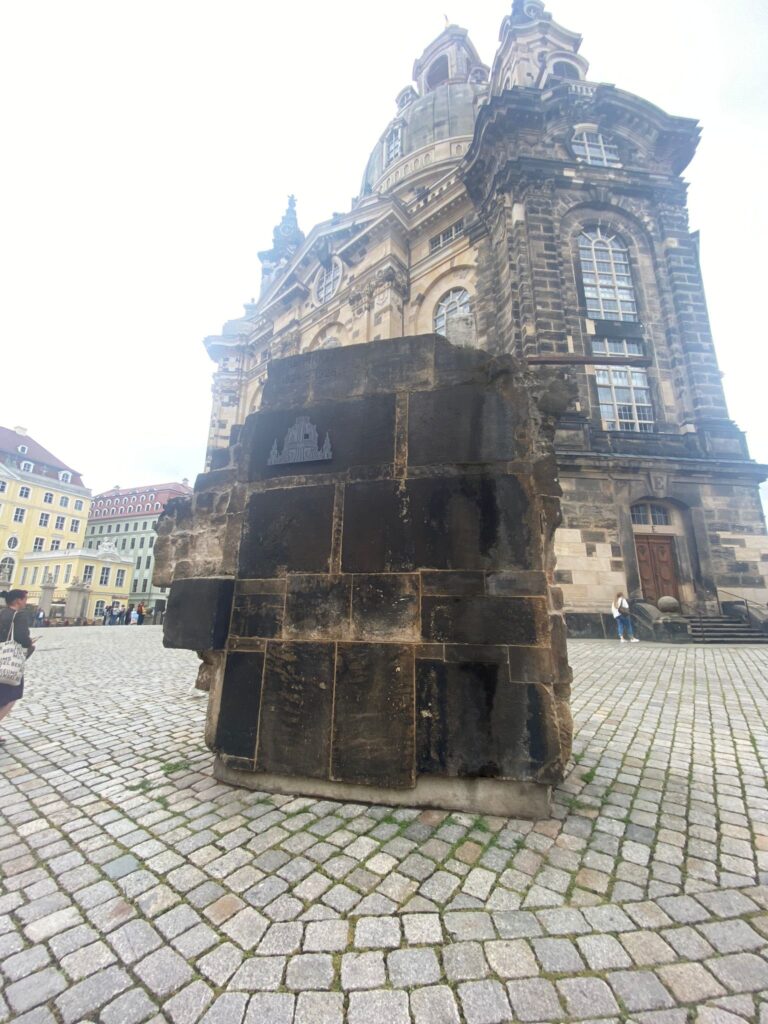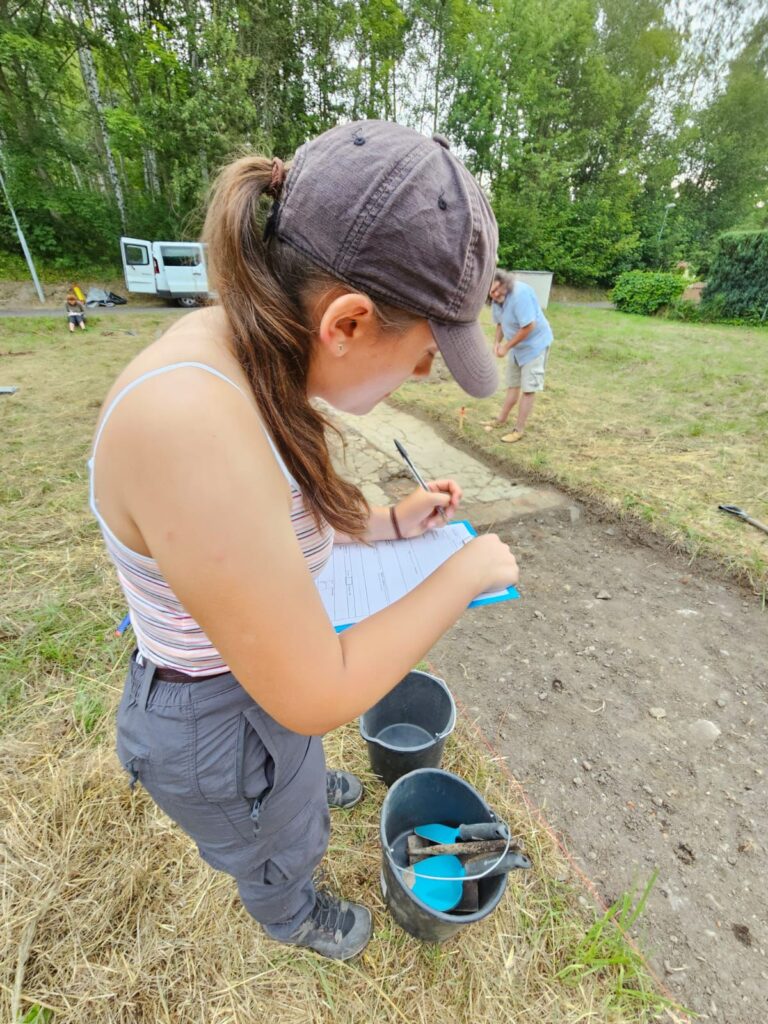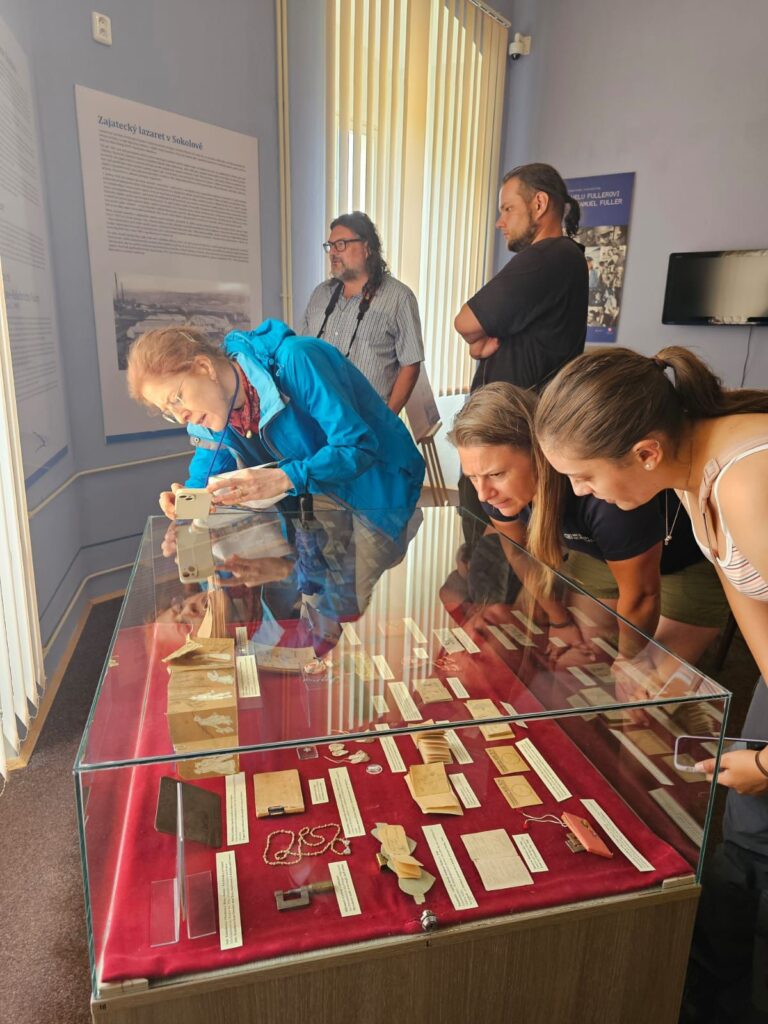This summer with the help of my LEAP internship grant I was able to travel to the Czech Republic to participate in an archaeological dig based in two different sites in Bohemia.
I joined a dig with one of the lecturers from my department and we stayed in accommodation with other Czech archaeology students and lecturers. It was lovely being able to talk to the other students about their university experience and the differences between British archaeology and Czech archaeology.
The first part of the trip was spent at a site in Libkovice/Libquitz where rescue archaeology was being carried out. Following this, we then moved on to our main site in Svatava. This is where we spent most of the two weeks. This site was once a women’s concentration camp used for women from many different places across Europe as it was a branch of the larger Flossenbürg. These women were sent to work in a factory down the road that is still standing today. Our aim was to use the testimonies of the women that survived this ordeal to excavate the kitchen barracks and the ditch that surrounded them. We also began to search for the watchtower that was supposedly located nearby. We were looking for items that might help us understand and publicise the personal stories of the women of this camp.
Our first day was spent visiting the memorial for the camp and looking at some of the air raid shelters that are still standing. Following this we then got to work striping back the turf of the area we were working on. Surprisingly it wasn’t long before we hit what we believed to be the old flooring of the kitchen. There was however, no sign of the ditch that was supposed to be surrounding the building.
We continued this process to extend the trench and find where the concrete floors and wall foundations ended and where the ditch began. At the one end we were hindered by the presence of a road and at the other we continued until we found what we thought was a ditch. We then started to dig deeper to see what was under the floors of the kitchen and then what was in the ditch.
At the end of the first week, I was able to take a trip to Dresden to help understand the history of the area better. Here it was really interesting to look at the city and its architecture from an archaeological perspective. It was fascinating to see the ways in which the city had been rebuilt (or not) following the bombings that occurred during the second world war. We also were fortunate enough to stop for lunch and were able to try out the local cuisine as recommended by our Czech colleague.
Week two of the dig commenced with heavy rain which drove us indoors to visit the local museum. This trip allowed us to explore ideas that already existed about the camp. This trip also helped me to visualise the kinds of things we were searching for on the dig and how they might be presented in the future. The museum also helped to place the war in context in terms of the local history.
We then spent two days at another site in the Czech Republic called Kaštice. This area is the site of at least one mass grave. There is video evidence of that grave being exhumed in 1945 and so we were using metal detectors to try and find any personal items that had been left behind. We ended up finding lots of bullet casings, but it was hard work trying to use metal detectors over that terrain. I hadn’t done much metal detecting before and so it was really exciting to be able to develop this as a skill.
The rest of the week was spent back in Svatava. We recorded all the things we had found and made drawings of the site. I feel I really improved my recording skills. We also had a day where the media came to film and record the site. The mayor of the town also visited as did many of the people who live nearby. It was really lovely to see how engaged everyone was with the site and how interested they were in our work.
Overall, I think this trip really helped me to understand and experience a type of archaeology that I didn’t know existed. It has also given me ideas about future careers and potential further study. It was an amazing privilege to be part of a dig like this. It has also helped to further my experience in the field and it has allowed me to carry out my fieldwork in an area that I never thought was possible! It also tested my courage and self confidence and has helped me feel more confident and capable.





